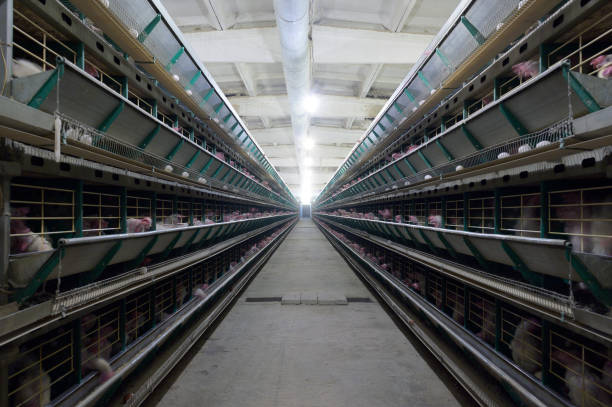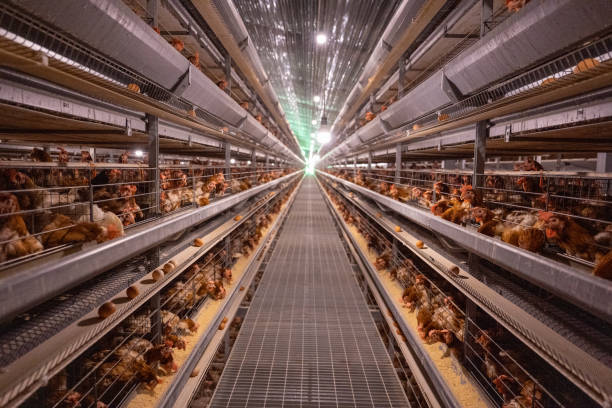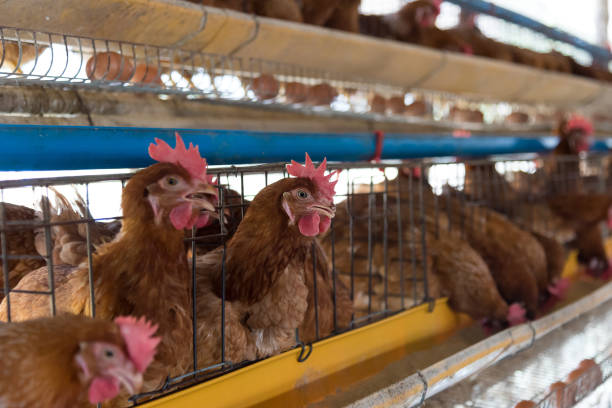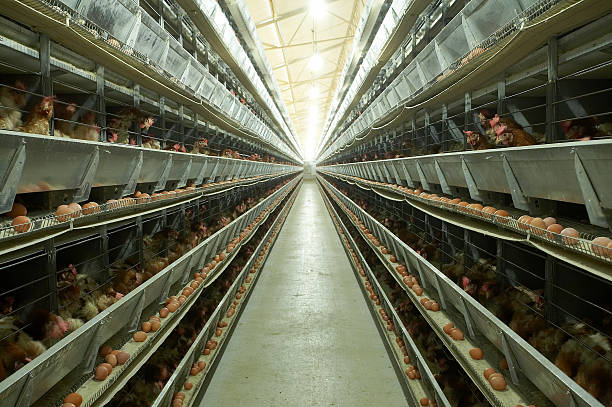
Environmental Control for Kenyan Poultry Farms: A Buyer’s Guide
# Environmental Control for Kenyan Poultry Farms: A Buyer’s Guide
Kenya’s poultry industry is booming, with a growing demand for eggs and meat. But to truly thrive in this business, Kenyan farmers need more than just good birds. Effective environmental control is absolutely crucial for optimizing productivity, minimizing disease, and maximizing profitability. This guide will walk you through the essential aspects of environmental control for your Kenyan poultry farm, from understanding the basics to choosing the right equipment and strategies.
## Why Environmental Control Matters in Kenya

Kenya’s climate varies significantly, from the hot and humid coastal regions to the cooler highlands. These variations can put significant stress on your chickens if their environment isn’t properly managed. Here’s why environmental control is so important:
* **Temperature Regulation:** Chickens are highly sensitive to temperature fluctuations. Extreme heat can lead to heat stress, reduced feed intake, and decreased egg production or weight gain. Cold temperatures can cause increased feed consumption to maintain body temperature, slowing growth and impacting profitability. Proper environmental control helps maintain optimal temperatures for each stage of your birds’ life.
* **Humidity Control:** High humidity can create a breeding ground for bacteria and parasites, increasing the risk of disease outbreaks. Low humidity can lead to respiratory problems. Maintaining the right humidity balance is key to a healthy flock.
* **Ventilation:** Good ventilation removes stale air, ammonia, and dust, replacing it with fresh, oxygen-rich air. This is vital for respiratory health and overall well-being. Inadequate ventilation can lead to respiratory diseases and poor air quality.
* **Lighting:** Lighting plays a critical role in egg production and growth. Controlled lighting programs can stimulate egg laying, improve feed conversion, and increase overall productivity.
* **Disease Prevention:** By maintaining a clean, dry, and well-ventilated environment, you significantly reduce the risk of disease outbreaks, minimizing losses and treatment costs.
* **Improved Feed Conversion Ratio (FCR):** When birds are kept in a comfortable environment, they utilize feed more efficiently, leading to better FCR and higher profits.
* **Enhanced Bird Welfare:** A comfortable and stress-free environment promotes better bird welfare, leading to healthier and more productive flocks. Happy chickens lay more eggs!
## Key Elements of Environmental Control
Effective environmental control involves several key elements working together:
### 1. Housing Design and Construction: Laying the Foundation
The design and construction of your poultry house are the foundation of effective environmental control. Consider these factors:
* **Orientation:** Orient the house to minimize direct sunlight exposure, especially during the hottest part of the day. An east-west orientation is generally recommended in Kenya.
* **Insulation:** Proper insulation helps to maintain a consistent temperature inside the house, reducing the impact of external temperature fluctuations. Consider using locally available materials like grass thatch, or modern insulation materials.
* **Roofing:** The type of roofing material can significantly impact temperature inside the house. Reflective roofing materials can help to reduce heat absorption.
* **Flooring:** Concrete floors are easy to clean and disinfect, but can be cold. Litter floors (e.g., wood shavings, rice husks) provide insulation and comfort, but require proper management to prevent ammonia buildup.
* **Space Allowance:** Providing adequate space per bird is crucial for preventing overcrowding and minimizing stress. Overcrowding can lead to increased disease risk and reduced productivity. Refer to industry best practices for specific recommendations based on bird type and age.
### 2. Ventilation Systems: Breathing Easy
Ventilation is essential for removing stale air, ammonia, and moisture, replacing it with fresh air. Here are the ventilation options:
* **Natural Ventilation:** Relies on natural air currents to circulate air. This is a cost-effective option for smaller farms in cooler climates. Natural ventilation requires strategically placed openings (e.g., side vents, roof vents) to allow for airflow. The effectiveness of natural ventilation depends on wind speed and direction.
* **Mechanical Ventilation:** Uses fans to force air through the house. This is a more reliable option for larger farms or in areas with high humidity or temperature extremes. There are different types of mechanical ventilation systems, including:
* **Tunnel Ventilation:** Fans are located at one end of the house, creating a tunnel of air flowing from one end to the other. This is effective for cooling large houses quickly.
* **Cross Ventilation:** Fans are located on one side of the house, drawing air across the house and exhausting it through openings on the opposite side.
* **Negative Pressure Ventilation:** Fans exhaust air from the house, creating a negative pressure that draws fresh air in through inlets. This helps to control airflow and prevent drafts.
When choosing a ventilation system, consider the size of your house, the climate in your area, and your budget.

### 3. Cooling Systems: Beating the Heat
Kenya’s hot climate often necessitates cooling systems to prevent heat stress. Common options include:
* **Evaporative Cooling:** Uses the evaporation of water to cool the air. This is a cost-effective option in dry climates. Evaporative cooling systems include:
* **Pad and Fan Systems:** Water is sprayed onto porous pads, and fans draw air through the pads, cooling it as the water evaporates.
* **Fogging Systems:** Fine mist is sprayed into the air, cooling it as it evaporates.
* **Sprinkler Systems:** Water is sprayed directly onto the birds, providing evaporative cooling. This can be effective, but it’s important to ensure proper drainage to prevent wet litter.
* **Shade Cloth:** Provides shade to reduce direct sunlight exposure. This is a simple and cost-effective way to reduce heat stress.
### 4. Heating Systems: Keeping Warm
In cooler regions or during colder months, heating systems may be necessary to maintain optimal temperatures. Options include:
* **Brooders:** Used to provide supplemental heat for chicks. They can be powered by electricity, gas, or kerosene.
* **Space Heaters:** Used to heat the entire house. They can be powered by electricity, gas, or wood.
* **Infrared Heaters:** Provide radiant heat directly to the birds. This can be more energy-efficient than space heaters.
### 5. Lighting Systems: Illuminating Productivity
Lighting programs can significantly impact egg production and growth.
* **Layer Lighting:** Layer hens require a specific amount of light to stimulate egg production. Typically, 14-16 hours of light per day is recommended. Artificial lighting can be used to supplement natural light during shorter days.
* **Broiler Lighting:** Broilers generally require less light than layers. Controlled lighting programs can improve feed conversion and reduce leg problems.
* **Light Intensity:** The intensity of the light is also important. Too much light can cause stress, while too little light can reduce productivity.
* **Light Color:** The color of the light can also affect bird behavior.
### 6. Humidity Control: Striking the Balance
Maintaining the right humidity level is crucial for preventing disease and respiratory problems.
* **Ventilation:** Good ventilation is the primary way to control humidity.
* **Litter Management:** Proper litter management is essential for preventing moisture buildup. Regularly remove wet litter and replace it with fresh, dry bedding.
* **Dehumidifiers:** Can be used in enclosed houses to remove excess moisture from the air.
### 7. Manure Management: Handling Waste Responsibly
Proper manure management is essential for preventing odor problems, controlling flies, and protecting the environment.
* **Regular Removal:** Remove manure regularly from the house to prevent ammonia buildup.
* **Composting:** Composting manure can reduce odor and kill pathogens.
* **Anaerobic Digestion:** Anaerobic digestion can be used to produce biogas from manure, providing a source of renewable energy.
## Choosing the Right Equipment and Strategies
Selecting the right environmental control equipment and strategies depends on several factors:
* **Climate:** The climate in your area is the most important factor to consider. Choose equipment and strategies that are appropriate for the temperature and humidity conditions in your region.
* **Bird Type:** Different types of birds have different environmental needs. Layers require specific lighting programs, while broilers may require cooling systems to prevent heat stress.
* **Farm Size:** The size of your farm will affect the type and scale of equipment you need.

* **Budget:** Environmental control equipment can be expensive. Choose equipment that is cost-effective and provides a good return on investment.
* **Energy Costs:** Energy costs can be a significant expense for poultry farms. Choose energy-efficient equipment to minimize your operating costs. Consider using renewable energy sources, such as solar power, to reduce your reliance on grid electricity.
* **Availability of Local Resources:** Consider using locally available materials and resources to reduce costs and support the local economy.
## Implementing Environmental Control: A Gradual Approach
Implementing environmental control doesn’t have to be an all-or-nothing proposition. You can start with simple, low-cost measures and gradually upgrade your equipment as your business grows.
* **Start with the Basics:** Focus on the fundamentals of housing design, ventilation, and litter management.
* **Monitor Your Birds:** Closely monitor your birds for signs of stress, such as panting, reduced feed intake, or decreased egg production.
* **Keep Records:** Keep accurate records of temperature, humidity, and ventilation rates. This will help you to identify patterns and make informed decisions.
* **Seek Expert Advice:** Consult with poultry experts and equipment suppliers to get advice on the best environmental control solutions for your farm.
## The Long-Term Benefits
Investing in proper environmental control may seem like a significant expense, but the long-term benefits are substantial.
* **Increased Productivity:** Optimizing the environment can increase egg production, weight gain, and feed conversion.
* **Reduced Disease Risk:** A clean, dry, and well-ventilated environment reduces the risk of disease outbreaks, minimizing losses and treatment costs.
* **Improved Bird Welfare:** A comfortable and stress-free environment promotes better bird welfare, leading to healthier and more productive flocks.
* **Enhanced Profitability:** By increasing productivity and reducing losses, environmental control can significantly enhance your farm’s profitability.
By understanding the principles of environmental control and implementing the right strategies, Kenyan poultry farmers can create thriving and sustainable businesses. Focus on creating a comfortable and healthy environment for your birds, and you’ll be well on your way to success. Remember to adapt the general guidelines to your specific location, bird type, and resources for the best possible results!
